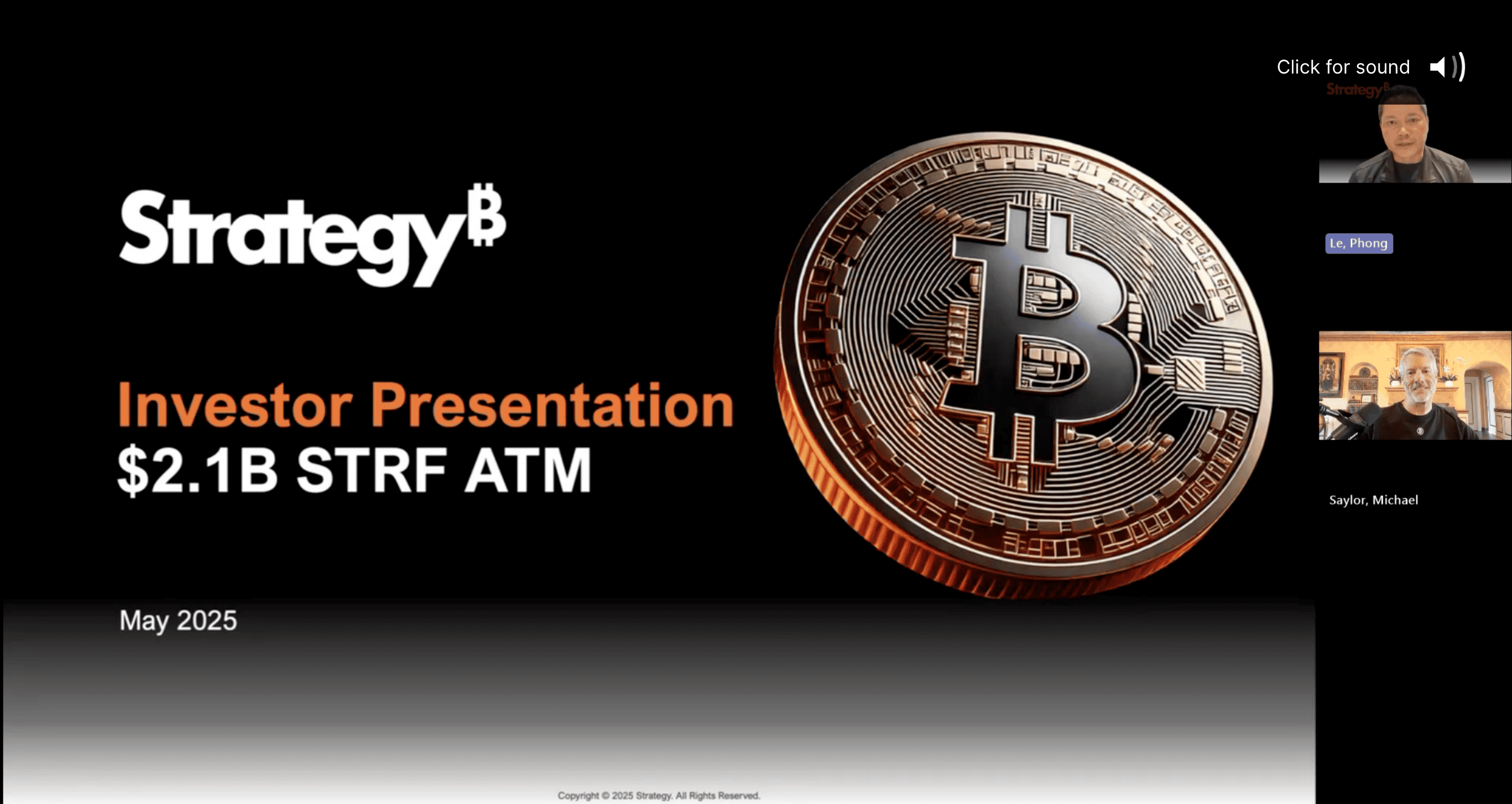Discover STRF (Strife), Strategy's Bitcoin-backed preferred stock for cautious investors, offering steady payouts and strong protections with low risk.
Timestamped Overview
[00:00:00] Phong Le reviews performance since Q1 earnings:
- BTC yield at 16.3% (target 25%), halfway met.
- BTC dollar gain at $7.7 billion (target $15 billion), outperforming other Bitcoin treasury companies.
[00:01:50] Phong Le discusses STRK (STRK) and STRF performance:
- STRK: $80 to $100, 24% gain since inception.
- STRF: $85 to $98.8 in two months, 16% gain, compared to other prefers at -5.5% and -3.8%.
- Last month: STRF +12%, STRK +17%.
[00:02:45] Phong Le explains why STRK and STRF are unique:
- Longer duration than typical prefers (5-30 years).
- Higher coupons: STRK 8%, STRF 10% vs. others at 5-7%.
- High trading volume: STRK $31M/day, STRF $23M/day vs. others at $0.4M/day.
[00:03:36] Phong Le discusses STRF ATM:
- Confidence in issuing $2.1 billion ATM due to STRF’s liquidity and demand.
- STRK ATM issued $212 million without price pressure.
- Progress on $42 billion plan: 55% complete for MSTR equity, $212M issued for STRK.
[00:05:03] Michael Saylor explains STRF’s role:
- STRF is the “crown jewel” of preferred strategy, aiming for investment-grade status.
- Targets conservative investors avoiding volatile stonks or direct Bitcoin.
- High BTC rating (6.7), expected to improve with Bitcoin’s rise and junior securities issuance.
[00:08:17] Michael Saylor outlines capital structure:
- MSTR equity: High volatility, more leverage than Bitcoin.
- STRK: Moderate volatility, appeals to “Bitcoin curious” with dividends and upside.
- STRF: Low volatility, senior-most preferred, targets risk-averse investors.
[00:10:42] Michael Saylor details ATM management:
- Three ATMs ($21B MSTR, $21B STRK, $2.1B STRF) balanced daily based on market conditions.
- Synchronized with BTC acquisitions to stay hedged, maximizing gains while managing liquidity.
[00:13:06] Michael Saylor highlights ecosystem:
- MSTR equity as a liquid, credit-worthy base for leveraged ETFs and options.
- STRF and STRK strip volatility for risk-averse investors.
- Supported by $60 billion Bitcoin reserve (576,230 BTC).
[00:15:38] Michael Saylor concludes:
- STRF ATM is part of ongoing Bitcoin strategy innovation.
- Thanks investors for support, looks forward to future updates.
Notable Quotes
BTC Yield and Gain Performance
A year to date, we're at 16.3% versus a 25% target on BTC yield, so well through the halfway mark on that particular KPI.
Phong Le @digitalphong
BTC Dollar Gain
Our BTC dollar gain... we're at $7.7 billion of BTC dollar gain year to date on a target of $15 billion.
Phong Le @digitalphong
STRF and STRK Performance
STRF plus 12% in the last month and STRK plus 17% in the last month, both of which are now approaching power value on instruments that are very unique in the market.
Phong Le @digitalphong
STRF as Crown Jewel
We see STRF as the crown jewel of our preferred strategy... our aspiration is for the market to view this as investment grade fixed income.
Michael Saylor @saylor
STRF Investor Appeal
STRF is an instrument to draw a new class of investors into the Bitcoin universe that otherwise they wouldn't buy Bitcoin, they wouldn't buy a highly volatile stonk.
Michael Saylor @saylor
STRK's Unique Appeal
STRK... it's for the Bitcoin curious or the crypto curious, think of it as like a Bitcoin fellowship that comes with a living stipend.
Michael Saylor @saylor
Capital Structure Strategy
Our goal with STRF is really to focus upon stripping away the volatility and provide the highest degree of seniority we can.
Michael Saylor @saylor


